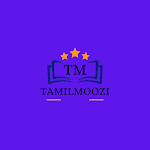The Government of India Act 1935 wasone of the important positive outcomes of theCivil Disobedience Movement. The key featuresof the Act were provincial autonomy anddyarchy at the centre. The Act provided for anall India Federation with 11 provinces, 6 Chiefcommissioner’s provinces and all those Princely
states which wished to join the federation. TheAct also provided autonomy to the provinces.All the subjects were transferred to the control ofIndian ministers. Dyarchy that was in operationin provinces was now extended to the centralgovernment. The franchise, based on property,was extended though only about ten percent ofthe population enjoyed the right to vote. By thisAct Burma was separated from India.As news spread to different parts of India,a spontaneous protest broke out everywhere.The people protested in whatever form that
they could, such as hartals, strikes, picketing.The government suppressed it with bruteforce. People attacked government buildings,railway stations, telephone and telegraphlines and all that stood as symbols of Britishauthority. This was particularly widespreadin Madras. Parallel governments wereestablished in Satara, Orissa, Bihar, UnitedProvinces and Bengal.The British government arrested the INAofficers and put them on trial in the Red Fort.The trial became a platform for nationalistpropaganda. The Congress set up a defencecommittee comprising Nehru, Tej BahadurSapru, Bhulabhai Desai and Asaf Ali. Thoughthe INA officers were convicted they werereleased due to public pressure. The INAexploits and the subsequent trials inspired the Indians.
The Wavell Plan was announced on14 June 1945. It provided for an interim
government, with an equal number of Hindusand Muslims in the Viceroy’s ExecutiveCouncil. All portfolios, except war portfolio,was to be held by Indian ministers. However,in the Simla Conference, the Congress andthe Muslim League could not come to anagreement. Jinnah demanded that all theMuslim members should be from the MuslimLeague and they should have a veto on allimportant matters. In the provincial electionsheld in early 1946 the Congress won most of
the general seats and the Muslim League wonmost of the seats reserved for the Muslims thus bolstering its claim.Difference arose between Congress and
Muslim League when the former nominateda Muslim member. The League argued it wasto be the sole representative of the Muslimsand withdrew its approval. Jinnah declared16 August 1946 as the ‘Direct Action Day’.Hartals and demonstrations took place whichsoon turned into Hindu-Muslim conflict.It spread to other districts of Bengal. Thedistrict of Noakhali was the worst affected.
The interim government headed byJawaharlal Nehru was formed in September
1946. After some hesitation the MuslimLeague joined it in October 1946. Its
representative Liaqat Ali Khan was madethe Finance Member. In February 1947,
Clement Atlee declared that power would betransferred by June 1948. Lord Mountbattenwas sent as Viceroy to India with the specifictask of transfer of power. On 3 June 1947the Mountbatten Plan was announced. ItproposedTamil Nadu showed the lead in resistingcolonial rule. As early as the late eighteenth
century the Palayakarars, resisted theEnglish attempts to establish their political
hegemony in Tamil Nadu. Even after thedefeat of the Palayakarars, an uprising was
organised by Indian sepoys and officers inVellore Fort in 1806 that had its echoes inseveral cantonments in south India. Thanksto the introduction of Western educationand eventual emergence of educated Indianmiddle class, the struggle against the Britishtook the constitutional path. The freedomstruggle in Tamil Nadu was unique, becausefrom the beginning it was not only a strugglefor independence from the English rule butalso a struggle for independence from socialdisability imposed by the obnoxious castesystem. In this lesson we shall study the role
played by nationalists wedded to diverse ideologies in Tamil Nadu.
DEPARTMENTAL EXAMINATIONS
TAMIL NADU SCHOOL EDUCATION DEPARTMENT ADMINISTRATIVE
*TEST – PAPER - II -072- ELEMENTARY / MIDDLE AND SPECIAL SCHOOLS 2019MAY.pdf - DOWNLOAD PDF
*TEST – PAPER - II -072- ELEMENTARY / MIDDLE AND SPECIAL SCHOOLS 2018MAY.pdf - DOWNLOAD PDF
*TEST – PAPER - II -072- ELEMENTARY / MIDDLE AND SPECIAL SCHOOLS 2022 (computer based test)DEC.pdf - DOWNLOAD PDF
*TEST – PAPER - II -072- ELEMENTARY / MIDDLE AND SPECIAL SCHOOLS 2020DEC.pdf - DOWNLOAD PDF
*TEST – PAPER - II -072- ELEMENTARY / MIDDLE AND SPECIAL SCHOOLS 2019DEC.pdf - DOWNLOAD PDF
*TEST – PAPER - II -072- ELEMENTARY / MIDDLE AND SPECIAL SCHOOLS 2022MAY.pdf - DOWNLOAD PDF
*TEST – PAPER - II -072- ELEMENTARY / MIDDLE AND SPECIAL SCHOOLS 2021DEC(computer based test) pdf - DOWNLOAD PDF







0 கருத்துகள்